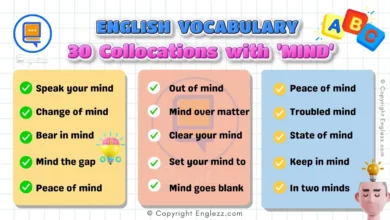In the realm of communication, accents serve as powerful markers that not only convey one’s linguistic background but also shape the reception of messages within a multilingual society. Learn how to master the American accent easily with our step-by-step guide. Transform your speech today!
Understanding the nuances of an accent is akin to unlocking a door to deeper connections and enhanced comprehension in verbal interactions. Particularly for English as a Second Language (ESL) students, mastering the American accent presents a formidable challenge requiring dedication and strategic effort towards achieving fluency and clarity in speech.
Table of Contents
- How To Master The American Accent In Easy Proven Ways
- Fundamentals of American Pronunciation
- Techniques for Improving Listening Skills
- Practical Strategies for Phonemic Awareness
- Cultural Context In Mastering The American Accent
- Incorporating Idiomatic Expressions
- Advanced Techniques for Polishing Your Accent
- Self-evaluation
- Virtual Language Exchange Programs
- American Accent: What To Consider
- Final Tips On How To Master The American Accent
- Final Thoughts
- FAQs: Frequently Asked Questions
- Q: What are some quick tips for mastering the American accent?
- Q: How long does it typically take to master the American accent?
- Q: Can regional accents impact one’s ability to master the standard American accent?
- Q: Is it necessary to engage in formal speech therapy sessions to improve one’s accent significantly?
- Q: Are there specific online resources or tools that can aid in accent acquisition?
How To Master The American Accent In Easy Proven Ways
For ESL learners venturing into the realm of perfecting their American accent, a myriad of obstacles often present themselves along this linguistic journey. From grappling with intricate vowel sounds to navigating the complexities of stress patterns, each phonetic element demands meticulous attention to detail and diligent practice. Moreover, the influence of intonation on conveying emotions or intentions adds yet another layer of intricacy for non-native speakers striving for eloquence in pronunciation.

These challenges underscore the significance of delving into proven strategies that can enhance both comprehension and expression when adopting an American accent amidst diverse communicative contexts.
Fundamentals of American Pronunciation
Mastering the American accent requires a keen understanding of the fundamental aspects of pronunciation. Vowel sounds play a crucial role in differentiating meaning in American English due to contrasts between long and short vowels. For instance, distinguishing between the long ‘i’ sound in words like “sleep” and the short ‘i’ sound in “slip” can significantly impact comprehension and clarity in communication. ESL students often encounter challenges with these subtle distinctions, emphasizing the need for focused practice on vowel sounds to achieve proficiency.
Consonant clusters present another hurdle for non-native speakers aiming to perfect their American accent. Words like “strengths,” where multiple consonants are combined, can pose difficulties. By breaking down these clusters into individual sounds and practicing them separately before integrating them back into words, learners can enhance their pronunciation accuracy. Understanding the articulation of each consonant within clusters is key to overcoming these obstacles effectively.
Furthermore, stress patterns play a vital role in conveying meaning and emphasis within sentences. The ability to correctly emphasize syllables or words can prevent misunderstandings and enhance overall fluency. For instance, placing stress on the first syllable changes the noun “record” (meaning an official account) into the verb “record” (to document). Mastery of stress patterns equips learners with tools to express ideas clearly and engage more effectively in conversations, underscoring its significance in achieving a native-like American accent.
By honing these foundational principles of pronunciation—vowel distinctions, consonant cluster navigation, and stress pattern application—ESL students pave the way towards unlocking the secrets to mastering the American accent.
The nuances of intonation play a fundamental role in effective communication, especially when mastering the American accent. Understanding the differences between rising and falling intonation patterns is crucial in conveying meaning accurately. For example, in American English, rising intonation at the end of a sentence typically denotes a question, while falling intonation indicates a statement. To illustrate, consider the sentences “You’re coming to the party?” with rising intonation versus “You’re coming to the party.” with falling intonation—a slight change in pitch alters the intent behind the words.
Moreover, pitch variations are key in expressing emotions through changes in tone. In American English, emphasizing certain words through pitch can denote excitement, emphasis, or even sarcasm. For instance, saying “I really enjoyed your presentation” with a higher pitch on ‘really’ conveys genuine appreciation compared to stating it flatly without any fluctuations. This modulation helps convey subtle shades of meaning that are essential for natural-sounding speech.
In addition to pitch adjustments, mastering pause and pace contributes significantly to fluent speech delivery. Utilizing pauses strategically can enhance comprehension and emphasize important points. Consider how inserting brief pauses between words or phrases can break down complex ideas clearly. Similarly, varying pace—speeding up or slowing down—helps maintain listener engagement and emphasizes certain aspects of your speech content. Effective use of silence and rhythm creates a dynamic flow that captivates listeners while improving overall communication clarity in an American context.
Techniques for Improving Listening Skills
Improving listening skills is crucial in mastering the American accent, as understanding native speakers’ nuances and intonations aids in better pronunciation. One effective technique is exposing oneself to authentic conversations with native speakers. This exposure allows learners to familiarize themselves with the cadence, rhythm, and natural flow of spoken English. For instance, regularly tuning in to podcasts or watching American TV shows can provide a consistent stream of varied speech patterns, helping ESL students acclimate to different accents and speeds of speech.
Another valuable strategy involves focusing on word stress. Identifying key stressed syllables in words not only aids comprehension but also assists in mimicking native-like speech patterns. For example, recognizing that ‘CON-tent’ and ‘con-TENT’ have different stress patterns can significantly impact one’s fluency and clarity in oral communication. By honing this skill, learners can sound more natural when speaking American English.
Mimicry exercises are also a potent tool for enhancing listening abilities. By replicating native pronunciations through imitation drills, individuals can train their ears to detect subtle phonetic variations and mimic them accurately. Engaging in repeat-after-me exercises where students imitate phrases spoken by proficient speakers helps develop not only pronunciation skills but also listening accuracy. Practicing phrases like “How now brown cow” can aid in grasping vowel sounds and intonation patterns essential for sounding more like a native speaker. Through these techniques, ESL students can bridge the gap between comprehending spoken English and expressing themselves fluently with an American accent.
Practical Strategies for Phonemic Awareness
Developing phonemic awareness is a key aspect of mastering American English pronunciation. One effective technique is engaging in minimal pairs practice, where learners focus on distinguishing between similar sounds that can change the meaning of words. For instance, contrasting words like ‘ship’ and ‘sheep’ helps highlight the subtle differences in vowel sounds crucial for clear communication. By honing in on these distinctions, ESL students can enhance their ability to articulate words accurately and avoid misunderstandings in conversations.

Another engaging method to improve phonemic awareness is through tongue twisters challenges. These exercises push learners to enunciate words clearly and swiftly, thereby refining their articulation precision. Tackling phrases like “Peter Piper picked a peck of pickled peppers” not only strengthens mouth muscles for precise pronunciation but also aids in differentiating between challenging consonant clusters common in American English speech patterns.
Furthermore, familiarizing oneself with the phonetic alphabet can be instrumental in representing accurate pronunciation. Learning the symbols corresponding to various sounds enables ESL students to grasp the intricacies of American English phonetics systematically. By understanding how each symbol corresponds to specific speech sounds, learners can effectively map out proper pronunciations and apply this knowledge across a wide range of vocabulary, ultimately bolstering their overall accent mastery skills.
Cultural Context In Mastering The American Accent
Cultural context plays a pivotal role in mastering the American accent as it encompasses the nuances of regional variations, idiomatic expressions, and nonverbal cues that define communication patterns. When delving into regional accents awareness, ESL students are exposed to a diverse tapestry of linguistic flavors across the United States. For instance, understanding the Southern drawl prevalent in states like Mississippi or Texas involves mastering elongated vowels and slower speech patterns compared to the brisker pace often associated with a New York twang. By immersing themselves in these regional distinctions, learners can adapt their pronunciation to mirror these unique characteristics.
Incorporating Idiomatic Expressions
Incorporating idiomatic expressions into everyday speech is another key aspect of accent adaptation. Beyond mastering phonetic sounds, grasping colloquial phrases and their contextual usage is vital for achieving fluency. For example, integrating phrases like “hit the hay” for going to bed or “piece of cake” for something easy showcases an understanding not just of words but also cultural connotations embedded within language. These idioms add richness to speech and demonstrate a deeper assimilation of American English beyond surface-level pronunciation.
Nonverbal Communication Cues
Nonverbal communication cues act as silent partners to verbal messages, enhancing the overall impact of spoken words. In American culture, gestures such as a thumbs-up sign for approval or nodding for agreement accompany spoken language to convey meaning more effectively. Understanding these nonverbal nuances helps ESL learners navigate conversations with greater clarity and interpret subtleties that might be missed solely through verbal exchanges. By recognizing how gestures complement speech in American English interactions, learners can refine their communication skills holistically.
Advanced Techniques for Polishing Your Accent
To further refine your American accent, delving into advanced techniques can truly elevate your linguistic proficiency. Speech therapy resources offer tailored guidance for honing specific nuances of pronunciation. Working with professionals in this field can provide valuable insights and targeted exercises to address any lingering challenges in mastering the American accent. For instance, a speech therapist may focus on refining subtle vowel sounds or helping you navigate complex consonant clusters more proficiently.
Self-evaluation
Self-evaluation is another powerful tool in accent improvement. Voice recording analysis allows you to objectively assess your progress by listening back to your spoken English. By pinpointing areas where your pronunciation may diverge from native speakers, you can strategically concentrate on those aspects during practice sessions. Comparing your recordings to exemplar models helps cultivate a keen ear for detail in pronunciation accuracy.
Virtual Language Exchange Programs
Engaging in virtual language exchange programs propels your accent refinement journey further by facilitating interactions with native speakers for real-time feedback. Platforms like conversation exchange websites or language learning apps connect you with individuals fluent in American English, enabling immersive conversational experiences that foster a deeper understanding of intonation, stress patterns, and overall speech dynamics. Through regular exchanges with native speakers, you can actively apply the principles learned in previous stages to enhance fluency and authenticity in your American accent delivery.

These advanced strategies not only deepen your grasp of cultural context but also empower you to embody the nuances of an authentic American accent effectively. By combining professional support from speech therapy resources, introspective voice recording assessments, and immersive experiences through virtual language exchange programs, you unlock the secrets to attaining a polished American accent that resonates convincingly in both formal and informal settings.
American Accent: What To Consider
In mastering the American accent, it is essential to integrate advanced techniques that focus on fine-tuning pronunciation and ensuring effective communication. Through speech therapy resources, individuals can receive personalized guidance to address specific accent challenges, working towards achieving clarity and precision in speech. Additionally, engaging in voice recording analysis enables self-assessment of progress by closely monitoring pronunciation improvements over time through recorded samples.
Moreover, participation in virtual language exchange programs offers a dynamic platform for practical application of learned skills. By interacting with native speakers in conversational settings, ESL students can receive direct feedback on their accent and linguistic nuances, fostering a deeper understanding of American English intonation and articulation patterns. These interactions not only enhance language proficiency but also cultivate cultural awareness through authentic exchanges.
By weaving together these advanced techniques into your language learning journey, you can nurture a nuanced American accent that reflects both your linguistic abilities and cultural sensitivity. Embracing professional support, utilizing self-assessment tools, and actively engaging with native speakers are pivotal steps towards unlocking the secrets on how to master the American accent comprehensively. Ultimately, consistent practice fueled by dedication and a desire for linguistic excellence will pave the way for achieving fluency in American English while embodying the rich tapestry of its diverse accents and expressions.
Final Tips On How To Master The American Accent
In the quest to master the American accent, here are three essential tips to propel you towards linguistic excellence. Firstly, consistent practice is key in honing your accent. Just as professional athletes refine their skills through regular training sessions, language learners must dedicate time daily to practicing pronunciation, intonation, and listening comprehension. Whether through self-guided exercises or structured lessons, a commitment to consistent practice fosters gradual improvement and increased confidence in spoken English.
Secondly, immersing yourself in authentic language contexts can significantly accelerate your accent acquisition. Watching American movies and TV shows, listening to podcasts or radio broadcasts, and engaging with native speakers allow you to absorb the nuances of natural speech patterns and intonation. By actively participating in conversations and mimicking native pronunciations, you begin to internalize the rhythm and cadence of American English, making your speech more fluid and authentic.
Lastly, embracing feedback from peers or language instructors is crucial for fine-tuning your accent. Constructive criticism helps identify areas for improvement and guides your focus towards specific aspects of pronunciation or intonation that may require further attention. Utilizing feedback loops through voice recording analysis or participating in language exchange programs enables you to track progress over time and adjust your learning strategies accordingly. Remember that mastering an accent is a gradual process that entails perseverance and openness to refining your linguistic skills continuously.
Final Thoughts
Mastering the American accent is a multifaceted endeavor that requires dedication and consistent practice. By delving into the fundamentals of American pronunciation, understanding the nuances of intonation, improving listening skills, honing phonemic awareness, adapting to cultural contexts, and utilizing advanced techniques for refinement, ESL students and language enthusiasts can unlock the secrets to achieving a more authentic accent. Through strategic approaches such as exposure to native speakers, mimicry exercises, and participation in virtual language exchange programs, individuals can enhance their linguistic capabilities and bridge communication barriers effectively.
As emphasized throughout this discourse on accent acquisition, a holistic approach that combines theoretical knowledge with practical application is paramount. By engaging with diverse learning strategies elucidated in this article, learners can navigate the intricacies of American English phonetics with confidence and precision.
It is crucial to remember that developing an accent entails not only linguistic competence but also cultural awareness and nonverbal communication acumen. With perseverance and an unwavering commitment to improvement, attaining fluency in the American accent is indeed an achievable goal for those embarking on this linguistic journey.
FAQs: Frequently Asked Questions
Q: What are some quick tips for mastering the American accent?
A: Quick tips include regularly practicing minimal pairs exercises for sound distinction, incorporating tongue twisters for articulation enhancement, and actively participating in conversations with native speakers through language exchange programs.
Q: How long does it typically take to master the American accent?
A: The timeline for mastering the American accent varies depending on individual proficiency levels, frequency of practice sessions, and adherence to recommended strategies. Generally speaking, consistent effort over several months can lead to noticeable improvements.
Q: Can regional accents impact one’s ability to master the standard American accent?
A: While regional accents may influence speech patterns initially, targeted practice focusing on standard American pronunciation elements can help individuals mitigate these effects over time.
Q: Is it necessary to engage in formal speech therapy sessions to improve one’s accent significantly?
A: While speech therapy sessions can offer tailored guidance and feedback for refining pronunciation skills, diligent self-study accompanied by resources outlined in this article can also lead to substantial progress in mastering the American accent.
Q: Are there specific online resources or tools that can aid in accent acquisition?
A: Yes, various online platforms provide interactive exercises, pronunciation guides, forums for language exchange opportunities with native speakers which are valuable resources for individuals seeking to improve their American accent remotely.








